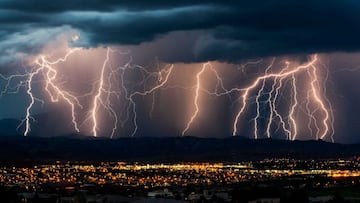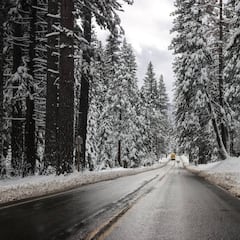What is the ‘Catatumbo lightning’, the phenomenon that occurs in the same place every year
Twenty-eight lightning bolts are produced per minute for nine hours and their energy could illuminate the entire continent of South American.

All across the planet there are certain spectacular natural phenomena that you have to witness once in a lifetime: the northern lights of the polar areas, halos, iridescent clouds... But there is one that probably far exceeds them all, and yet we would not like to be caught by surprise. We are talking about the lightning bolts of Catatumbo.
The phenomenon is nothing more than a very strong discharge of thunder and lightning without pause. It occurs around the Lake Maracaibo basin (Venezuela) and the geography of the place is key to the formation of electrical discharges due to the proximity between the Caribbean Sea and the mountain ranges of the area.
The great difference between the charges of the lower part of the clouds and the surface (and its elements) cause lightning. When it rains, friction occurs between the drops of water and the ice particles, which in turn causes the transfer of electricity (lightning ) that generates noise by the expansion and contraction of air (thunder). Another electrical fact: according to National Geographic, more than a million lightning strikes are produced each year in the area, which regenerates 10% of the planet’s ozone layer.
15,000 lightning strikes in nine hours
The images appear fictitious. A tennis match in the sky at lightning speeds, a million photographers living in the clouds firing their flashes almost at the same time. A god condemned to live in anger. Such are the lightning bolts of Catatumbo, which occur especially between the months of April and November.
Related stories
In fact, according to data from NASA EarthData, the phenomenon can occur between 260 and 300 days a year, with up to 250 lightning strikes per 0.4 square miles ( 1 square kilometer) . NOAA research physicist Ángel G Muñoz warns that the phenomenon causes a large number of deaths per year, since one in four Venezuelans lives in this area.
Lightning is usually created after sunset, when it is already dark. According to the experts, cited by Xataka, about 28 rays per minute are produced for nine hours on Lake Maracaibo. That is, more than 15,000 lightning strikes in that period. NASA estimates that the phenomenon could illuminate 100 million light bulbs, and 10 minutes of these lightning bolts would illuminate all of South America.


